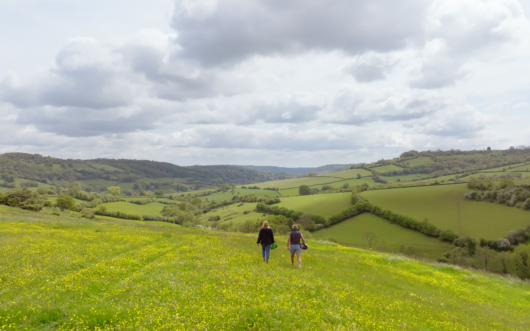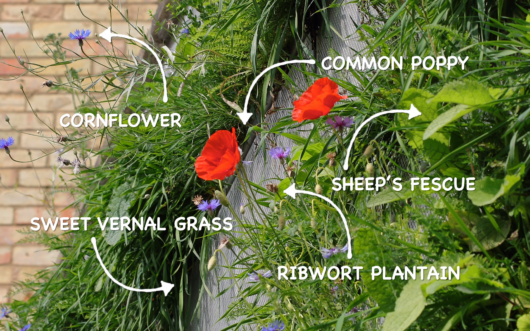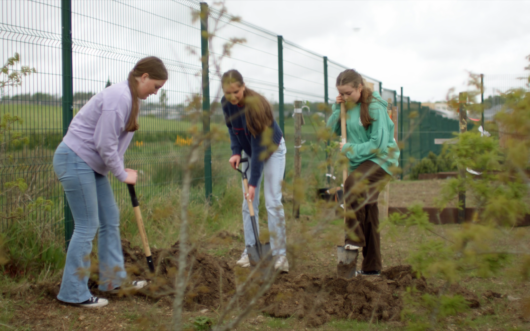Bring biodiversity, native plants, and rewilding inspiration into your classroom.
Explore how engineer Alistair Law’s Vertical Meadow project bolts native wildflowers onto city buildings to create food and habitat for pollinators and birds. This educator guide supports classroom discussion, NGSS-aligned learning, and hands-on opportunities for student engagement.
GRADES
9 – 12+
SUBJECTS
Biology, Storytelling, Ecology
Episode Overview
“We need to think of new ways to bring nature into the urban space.” -Alistair Law
Vertical Meadows tells the story of how a building facade engineer, Alistair Law, has designed a way to literally bolt nature onto our existing city buildings but also onto the scaffolding systems we use in building restoration and new building construction. Law’s design includes regionally sourced native grassland and meadow plants that grow from seeds directly on his vertical systems. We learn that because the plants are native, they track the seasons and provide steppingstones and corridors throughout the urban landscape of food and shelter for resident and migratory birds and insects.
Additionally, Law has teamed up with landowner Donald Macintyre who grows over 50 different species of native wildflowers on his land. Macintyre provides the wildflower seeds used in the Vertical Meadow mats. Law also works with biologist Scarlett Weston of BugLife who monitors which bees visit the vertical meadows. Weston studies how the Vertical Meadow sites are used by the bees and other pollinators as steppingstones across the city. These ingenious meadows are helping to bridge gaps along larger pollinator movement corridors that Weston is establishing across the UK.
Focus Questions
- In what ways does bringing plant biodiversity into city spaces also help restore and conserve animal biodiversity?
- What are the basic design requirements for an architectural system that can support a vertical plant community?
- A bio-inspired design is a concept, approach, or technology that shares both structure and function with nature. How is a vertical meadow an example of a bio-inspired design?
Key Concepts
- Habitat loss: Since 1930 97% of the United Kingdom’s wildflower meadows have been lost to agriculture and urban development. For some perspective, 62% of North America’s grassland ecosystems have been converted to other uses like agriculture and urban development.
- Biodiversity: The International Union for the Conservation of Nature lists more than 44,000 species threatened with extinction and agriculture is the major threat for more than half of these species. Installing vertical meadows of native plants in cities can help mitigate the biodiversity threats.
- Conservation biology: The practice of conservation biology recognizes the intrinsic value of the Earth’s natural diversity of organisms. Conservation biology works to understand how the natural world operates, how humans affect nature, and how we can use collective scientific and cultural knowledge to conserve Earth’s biological diversity.
- Bio-inspired design: Environmentally-minded engineers are developing concepts, approaches, and technologies that share both function and structure with nature. Vertical meadows can be nearly as diverse in plant life and ecosystem function as a traditional meadow or grassland.
Curriculum Connections
- HS-LS2: Ecosystems: Interactions, Energy, and Dynamics
- LS2.A: Interdependent Relationships in Ecosystems
- LS2.B: Cycles of Matter and Energy Transfer in Ecosystems
- LS2.C: Ecosystem Dynamics, Functioning, and Resilience
- LS4.D: Biodiversity and Humans
- HS-LS4 Biological Evolution: Unity & Diversity
- LS4. C: Adaptation.
- ETS1.B: Developing Possible Solutions
For complete list of curriculum connections including AP & IB standards, refer to full PDF.




